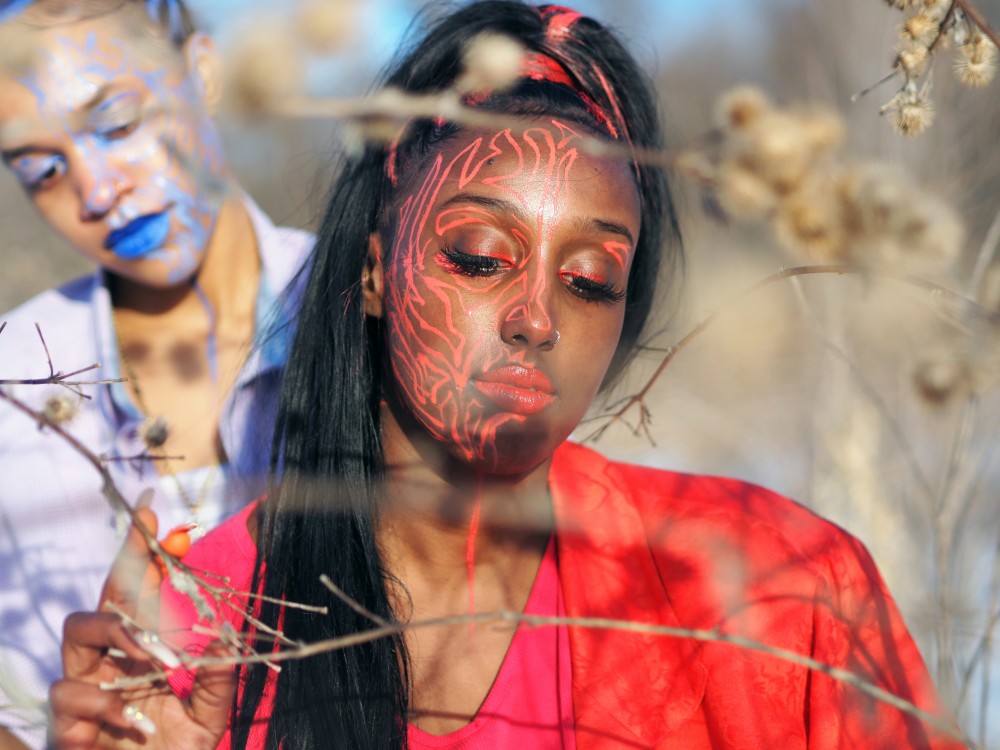Jenny Zander is not a painter in the same way that most painters would describe themselves. She’s a body artist and photographer, or simply put, “I paint people and I document it.”
In one of her photos, a person stands in the woods with bright blue paint that reaches their chest. The paint circles around their neck, eyes and arms. The model’s fingers look as though they’ve been dipped in red.
“I don’t want to engulf a person in paint, I want to accent their body,” Zander said. “I want the work of art to be my brush strokes and their skin, their body in the environment that holds all these elements in relationship with one another.”
Zander began body painting in high school. Her dad is an artist and Zander draws most of her inspiration from him.
“He has a style called allowing the painting to breathe,” Zander said. “In that way, you’re allowing natural colors to be your air or whatever it is.”
Allowing the painting to breathe means letting the color of the paper, or in Zander’s case, the body, come through in places where it’s needed. This creates a “breathing” effect that makes the piece of art appear more relaxed and natural.
To mix the paint, Zander uses different colored mineral powders to keep the paint glossy and malleable so it moves with the model’s body. She meets with each of her models to discuss how much skin they’re comfortable with showing, where they want to shoot the photos and any other preferences they have.

Zander uses bright, synthetic colors that aren’t often seen in nature. She’s been honing this skill since her first piece in high school.
“Over the past especially [her work] has just become way more fluid and consistent, which she’s been working extremely hard on,” said Elena Bagne, an artist and Zander’s childhood friend.
Each of Zander’s works are centered on creative resistance for social change. One project serves as a reminder of the murdered and missing indigenous women and how that violence follows generations. “In honor of all our lost sisters,” Zander wrote in her portfolio.
“I love art that makes you uncomfortable, but I also like art that pulls you in. That’s what I want to do with my work,” Zander said. “I often center my work around women because there’s a strong connection between the violence inflicted on those who identify as female, and the violence inflicted on the planet.”
The bodies and stories represented in Zander’s art lend themselves to a broader narrative about intimacy and trust, too.
“She has honored herself as an artist,” said Gayatri Narayanan, Zander’s friend and a plant and microbial biology major at the University of Minnesota. “I don’t think she has changed her core just to make a statement. Her work is not this thing that she, as a white artist, is trying to do outside of herself. It’s very much including her, and I think that’s very beautiful.”
Zander hopes to make her art more intergenerational and representative of other people and body types in her future work. For now, she’ll continue to emphasize the beauty of bodies and their intricate relationship to the natural world.
“Some of these bodies aren’t always seen as beautiful,” Zander said. “But that’s all part of loving your environment and loving your landscape. You can’t love what’s around you unless you first start with yourself, and that idea will radiate.”









